Search the Special Collections and Archives Portal
Search Results
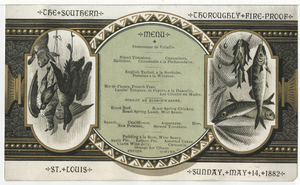
The Southern, menu, Sunday, May 14, 1882
Date
Archival Collection
Description
Text
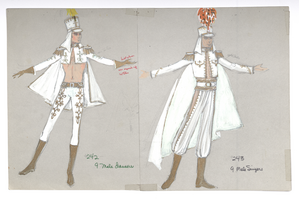
Males in white military-like costumes for Pzazz! 67, Las Vegas, Nevada: costume design drawing
Date
Archival Collection
Description
Hand written next to the male figure on the left: "242, 9 male dancers." Hand written next to the male figure on the right: "243, 9 male singers."
Costume Details: Two male performers wearing gold and white military-like costumes. On the left, the male dancer is wearing a short white jacket complete with golden designs, gloves, and fringed shoulder pads. For bottoms , the male is sporting white pants decorated with gold patterns across the thighs and a matching gold belt and pair of boots. He is also wearing a white, gold-lined cape and matching hat that has a yellow feather sticking out of the top of it. On the right is the design for the male singer, whose costume looks almost alike to the dancer, except for a few minor adjustments. For the singer, he is wearing white pants with a thigh high slit down the side, no gloves, and a matching white and gold hat with a feather sticking out of the top of it.
Show Name: Pzazz! 67
Performance Name: Salute to Beau Geste
Image
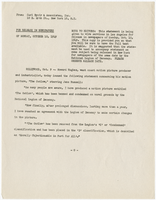
Press release regarding the reclassification code of the motion picture "The Outlaw"
Date
Description
Text
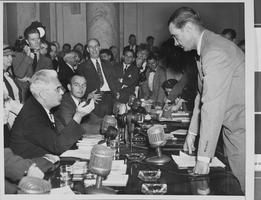
Photograph of Howard Hughes at hearing, Washington, August 08, 1947
Date
Archival Collection
Description
Image
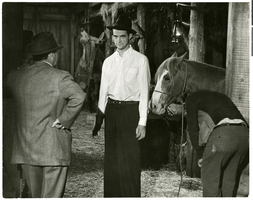
Photograph of Howard Hughes with Jules Furthman on the set of The Outlaw, Hollywood, circa 1941
Date
Archival Collection
Description
Image
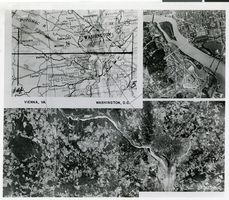
Aerial photograph of Potomac area, with map, demonstrating the Lockheed Shooting Star mapping plane, October 28, 1946
Date
Archival Collection
Description
Image
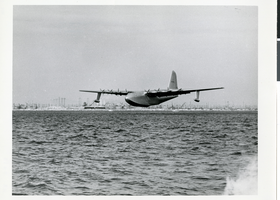
Photograph of Hughes Flying Boat during its test flight, November 2, 1947
Date
Archival Collection
Description
Image
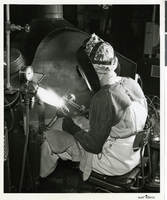
Photograph of new atomic-hydrogen welding process, Hughes Tool Company, Houston, Texas, circa 1929
Date
Archival Collection
Description
Image
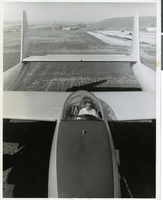
Photograph of Howard Hughes sitting in the cockpit of the XF-11 preparing for his first test flight in Culver City, California July 7, 1947
Date
Archival Collection
Description
Image

